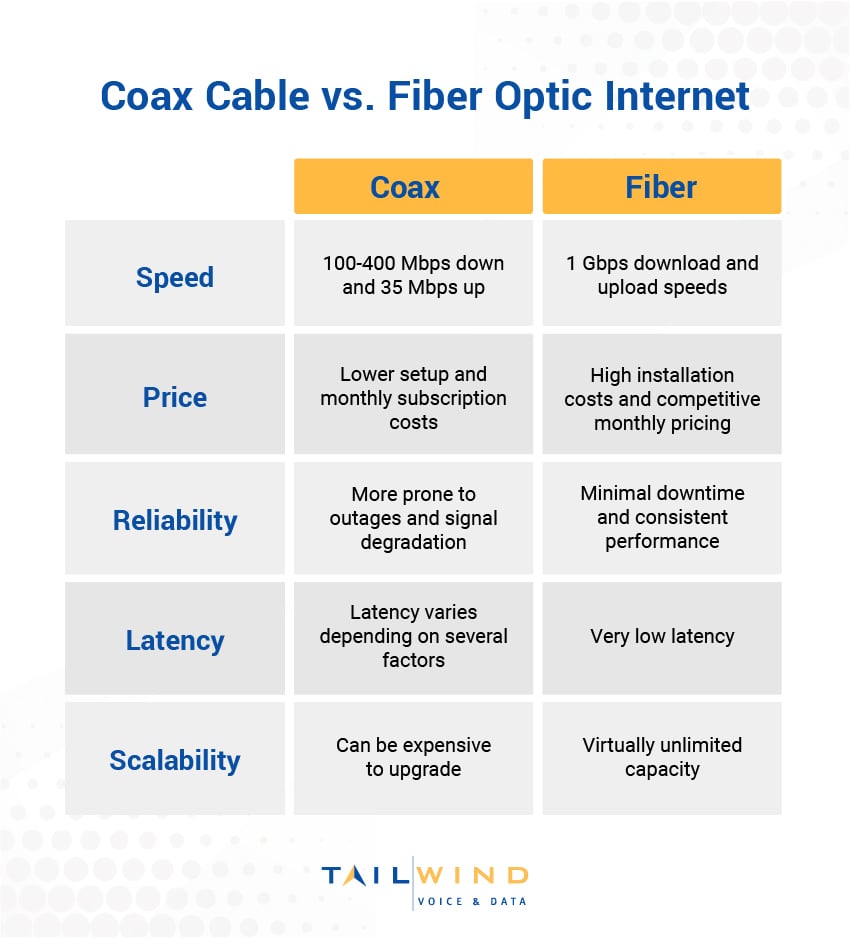The Rise of Fiber Internet: A Deep Dive into the Pros and Cons for Residential Use
Fiber optic internet has emerged as a leading contender in the broadband market, offering unprecedented speeds and reliability. This technology utilizes thin strands of glass to transmit data using light signals, resulting in significantly faster and more stable connections compared to traditional options like DSL or cable. While fiber internet boasts numerous advantages, it’s crucial to weigh the pros and cons before making the switch.
The Pros of Fiber Internet for Residential Use
Unparalleled Speed and Low Latency
The most significant advantage of fiber internet is its blazing-fast speeds. Fiber optic cables can transmit data at the speed of light, enabling download and upload speeds that are significantly faster than traditional broadband. This translates to:

Faster downloads: Enjoying high-definition movies and TV shows in a matter of seconds.
Enhanced Reliability and Stability
Fiber optic cables are less susceptible to interference from external factors like weather conditions or electromagnetic interference. This results in:
Fewer outages: Experience fewer service interruptions due to storms, power surges, or other environmental factors.
Future-Proof Technology
Fiber optic infrastructure is designed to accommodate the ever-increasing demands of modern technology. As bandwidth needs continue to grow, fiber internet can easily adapt by simply increasing the amount of data transmitted through the existing network. This ensures that your internet connection remains fast and reliable for years to come.
Increased Bandwidth

Fiber internet offers significantly higher bandwidth compared to other broadband technologies. This means you can connect multiple devices to your network simultaneously without experiencing a noticeable drop in speed. This is particularly beneficial for households with multiple users streaming, gaming, or working from home.
Improved Quality of Service (QoS)
Fiber internet providers often offer advanced Quality of Service (QoS) features. These features allow you to prioritize specific applications or devices on your network, ensuring that they receive the necessary bandwidth and resources. This can be particularly useful for online gaming, video conferencing, and other bandwidth-intensive activities.
The Cons of Fiber Internet for Residential Use
Limited Availability
One of the primary drawbacks of fiber internet is its limited availability. While fiber optic networks are constantly expanding, they are not yet available in many areas. This can be a significant limitation for those living in rural or suburban areas.
Higher Cost
Fiber internet service can be more expensive than traditional broadband options like DSL or cable. However, the higher cost is often justified by the increased speed, reliability, and bandwidth offered by fiber connections.
Installation Costs
Installing fiber internet can sometimes involve significant upfront costs. These costs may include:
Service activation fees: Charges incurred for connecting your home to the fiber optic network.
Limited Competition
In some areas, there may be limited competition among fiber internet providers. This can result in higher prices and fewer service options for consumers.
Potential for Service Disruptions
While fiber optic cables are generally more reliable than other broadband technologies, they are not entirely immune to service disruptions. Damage to the fiber optic line, such as from construction or excavation, can result in service outages.
Making the Switch to Fiber Internet
If you are considering switching to fiber internet, it’s essential to:
Check availability: Determine whether fiber internet is available in your area.
Conclusion
Fiber internet offers a compelling alternative to traditional broadband options, providing unparalleled speed, reliability, and bandwidth. However, it’s crucial to carefully weigh the pros and cons before making the switch. Consider factors such as availability, cost, and installation requirements to determine if fiber internet is the right choice for your needs.
By carefully evaluating your options and choosing the right provider, you can enjoy the benefits of a high-speed, reliable internet connection that can enhance your online experience in countless ways.

